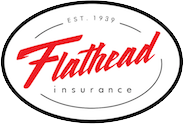As a general contractor, you’re not only responsible for what you do on the job but also what your employees and subcontractors do.
When you’re working around electricity and water lines, using power tools and climbing ladders day in and day out, a lot can go wrong. But with some preparation, you can help minimize the risk of injuries and property damage that can lead to a financial loss.
Here are six of the most common general contractor insurance claims and how to avoid them.
- Water damage
- Damage to other people’s property
- Bodily injury to others
- Stolen equipment and tools
- Property damage caused by tree trimming
- Bodily injury due to hazardous work
- Water damage
Water damage claims are expensive and can occur for many reasons. Unfortunately, they’re also common. The good news is that you can prevent most water damage claims with minor mitigation efforts and due diligence.
Roofing
One of the biggest causes of water damage is roof repair or replacement. Water damage typically happens when a storm hits before repairs are complete or the roof is put back on, and the interior of the building floods.
The best way to avoid this type of claim is to diligently track the weather. Unfortunately, severe weather may pop up out of nowhere during certain times of the year in some parts of the country. So, it’s also important to secure a tarp over the roof any time you’re not on the property to prevent water from getting in. Be sure to store project materials someplace safe, where they can’t get wet.
Incidental water damage
Not all general contractors work on roofs, but that doesn’t mean they don’t have to worry about water damage claims. Water damage can also occur if you or an employee accidentally drill or cut into piping or leave pipes exposed so they freeze and burst. Even forgetting to turn faucets off when you turn the water back on can cause damage.
To help avoid these types of claims:
- Train all employees to identify potential sources of water damage risk and how to mitigate them.
- Inspect the job site before you start working and create a risk mitigation plan based on the site’s unique risks. Create tasks you and your employees will complete. Share the plan with all employees and subcontractors before work begins.
- Inspect all equipment and materials to make sure they are in good condition and working correctly.
- Test piping before you turn the water back on. After turning the water on, wait to see if there’s a leak before you leave the job site.
- If pipes are exposed, turn the water off on the entire property and winterize the space so pipes don’t burst.
- Know where pipes are before you start drilling or cutting so you don’t accidentally hit one. If you don’t have plans for the building, take advantage of apps that help you identify the location of pipes and electrical wiring. And if you don’t know where they are, use extra caution when you cut or drill.
If water damage does occur, whether from a roof replacement or some other project, it’s important to act quickly. Cleaning it up right away can drastically reduce the damage and costs of an incident.
Also, even if you are not a plumber by trade, if you work around or test piping, it’s good to have plumbing coverage in case an accident happens. General contractor coverage doesn’t always include plumbing damage, so it’s better to double-check beforehand instead of finding out you’re not covered when filing a claim.
- Damage to other people’s property
The ladder you’re carrying from one room to another hits a chandelier, and it breaks. You drop a hammer you’re using to hang a piece of artwork and crack several floor tiles. Accidents happen, and while you may not eliminate all accidents at your job sites, you can help minimize them.
- Before you start working, complete a visual inspection of the job site to identify potential hazards and fragile property that can easily break.
- Cover surfaces with drop cloths, so paint and debris don’t get on the floor or furniture.
- When possible, move furniture, electronics and other items out of the area you’re working in to help prevent damage.
If an accident happens, general liability insurance can help pay for expenses.
- Bodily injuries to others
From slips and falls to falling objects, there are lots of ways people can get injured at a job site. To help prevent injuries, rope off areas where you, your employees or subcontractors are working to keep third parties away.
Clean up your tools and other materials when you’re finished, so people don’t trip on them. If you spill water or another substance, clean it up to prevent falls. And make sure dangerous chemicals, tools and materials are locked up.
- Stolen equipment and tools
Work trucks are target-rich environments for opportunistic thieves. If you have tools and other equipment in your vehicle, make sure it’s locked and the alarm is on. Don’t leave tools out if you’re on your lunch break, and if you can, take them home with you at the end of the day. If you need to leave supplies at a job site, make sure it’s secure.
And if your stuff does get stolen, having tools & equipment coverage can help get you back on the job faster without putting a huge dent in your wallet.
- Property damage caused by tree trimming
Cutting down trees and trimming branches can be dangerous. If you’re not careful, a tree or branch could land on someone’s home, car, fence, gazebo or another structure, damaging or destroying it.
To help prevent mishaps like these:
- No one should work in high winds, rain or other inclement weather.
- Train all employees and subcontractors and make sure they use the appropriate equipment for the job they’re performing.
- Move anything you can — like cars — out of the way before you start cutting. Lower branches to the ground; don’t just let them fall.
- If a tree is within 10 feet of a power line, call the utility company. Don’t try to cut it down yourself.
- Bodily injury due to hazardous work
When you’re climbing ladders, working on roofs and handling power tools all day, you can get hurt. To help prevent injuries:
- Inspect tools to make sure they’re in good condition.
- Train employees on how to use tools according to the manufacturer’s instructions.
- Wear proper protective gear.
- Take breaks regularly, so you’re not working while tired.
Be sure to keep your worker’s compensation coverage up to date as it provides a safety net in case of work-related injuries. It ensures you’re taking care of your injured workers while protecting yourself from financial losses related to an accident.
At Flathead Insurance, you and your business are very important to us. Call us at (406) 752-8000 or (208) 667-7485 or visit our website at https://www.flatheadinsurance.com/ to discuss your insurance needs. We can provide coverage from many insurance carriers so you receive the right insurance for your budget and needs!
*** 𝑊𝑒 ℎ𝑎𝑣𝑒 𝑜𝑓𝑓𝑖𝑐𝑒𝑠 𝑙𝑜𝑐𝑎𝑡𝑒𝑑 𝑖𝑛 𝐾𝑎𝑙𝑖𝑠𝑝𝑒𝑙𝑙, 𝑀𝑇 𝑎𝑛𝑑 𝐶𝑜𝑒𝑢𝑟 𝑑’𝐴𝑙𝑒𝑛𝑒, 𝐼𝐷. 𝐵𝑢𝑡, 𝑤𝑒 𝑎𝑙𝑠𝑜 𝑠𝑒𝑟𝑣𝑒: 𝐶𝑜𝑙𝑢𝑚𝑏𝑖𝑎 𝐹𝑎𝑙𝑙𝑠, 𝑊ℎ𝑖𝑡𝑒𝑓𝑖𝑠ℎ, 𝐵𝑖𝑔𝑓𝑜𝑟𝑘, 𝑎𝑛𝑑 𝑃𝑜𝑙𝑠𝑜𝑛 𝑖𝑛 𝑀𝑜𝑛𝑡𝑎𝑛𝑎; 𝐻𝑎𝑦𝑑𝑒𝑛, 𝑃𝑜𝑠𝑡 𝐹𝑎𝑙𝑙𝑠, 𝑅𝑎𝑡ℎ𝑑𝑟𝑢𝑚, 𝑎𝑛𝑑 𝑆𝑎𝑛𝑑𝑝𝑜𝑖𝑛𝑡 𝑖𝑛 𝐼𝑑𝑎ℎ𝑜; 𝑎𝑛𝑑 𝐿𝑖𝑏𝑒𝑟𝑡𝑦 𝐿𝑎𝑘𝑒 𝑎𝑛𝑑 𝑆𝑝𝑜𝑘𝑎𝑛𝑒 𝑖𝑛 𝑊𝑎𝑠ℎ𝑖𝑛𝑔𝑡𝑜𝑛.
Source: https://www.nextinsurance.com/blog/common-general-contractor-insurance-claims/

